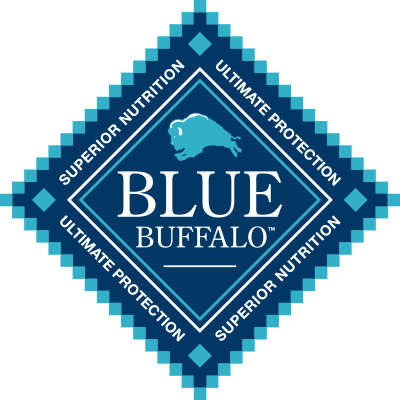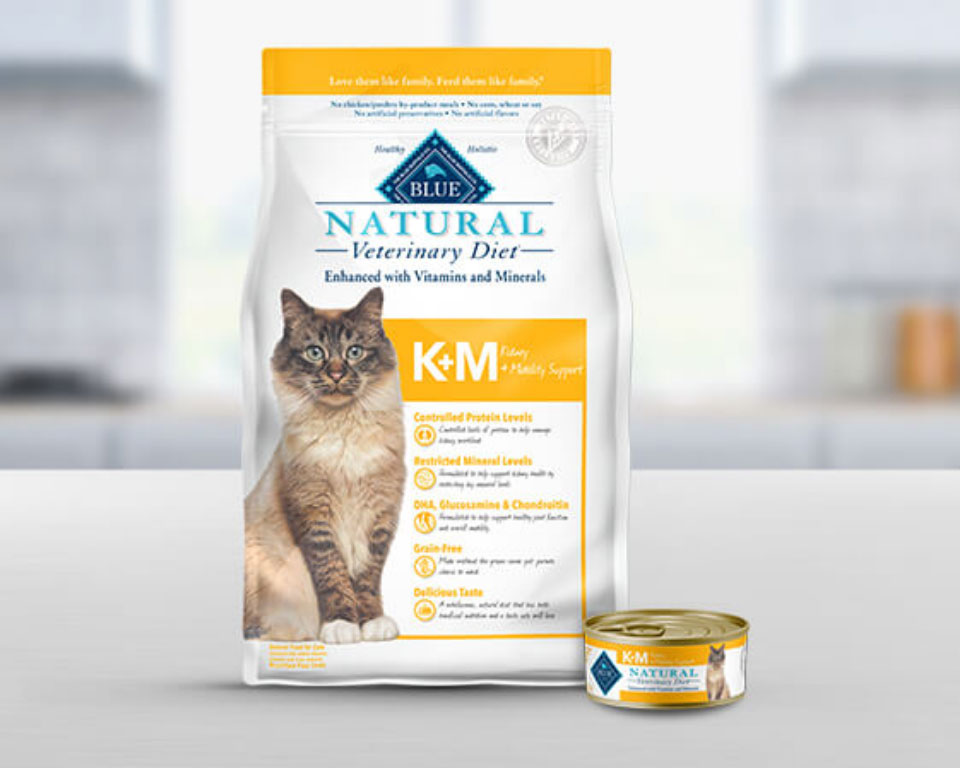
Features
- Controlled protein, phosphorus, and sodium
- Rich in EPA and DHA
- With added L-carnitine, vitamin E, and carotenoids
- Highly digestible protein sources (chicken, egg)
- Suitable for all IRIS stages
- Highly palatable
- Nutrition to benefit animals with cardiac disease6
- High digestibility
- Glucosamine and chondroitin along with extra EPA/DHA, antioxidants
- Clinically shown to maintain lean muscle mass in senior cats over 6 months13
ST-O-ne GUARD formulated to manage urolithiasis1
Recommended For
- Kidney disease
- Calcium oxalate urolithiasis
- Cardiac disease
- Joint disease
Not Recommended For
- Struvite urolithiasis
- Growth, pregnancy or lactation
- PROBLEM
Disease State Education
Chronic kidney disease (CKD) affects an estimated 0.5% to 1% of all dogs and 1% to 3% of all cats.1, 2
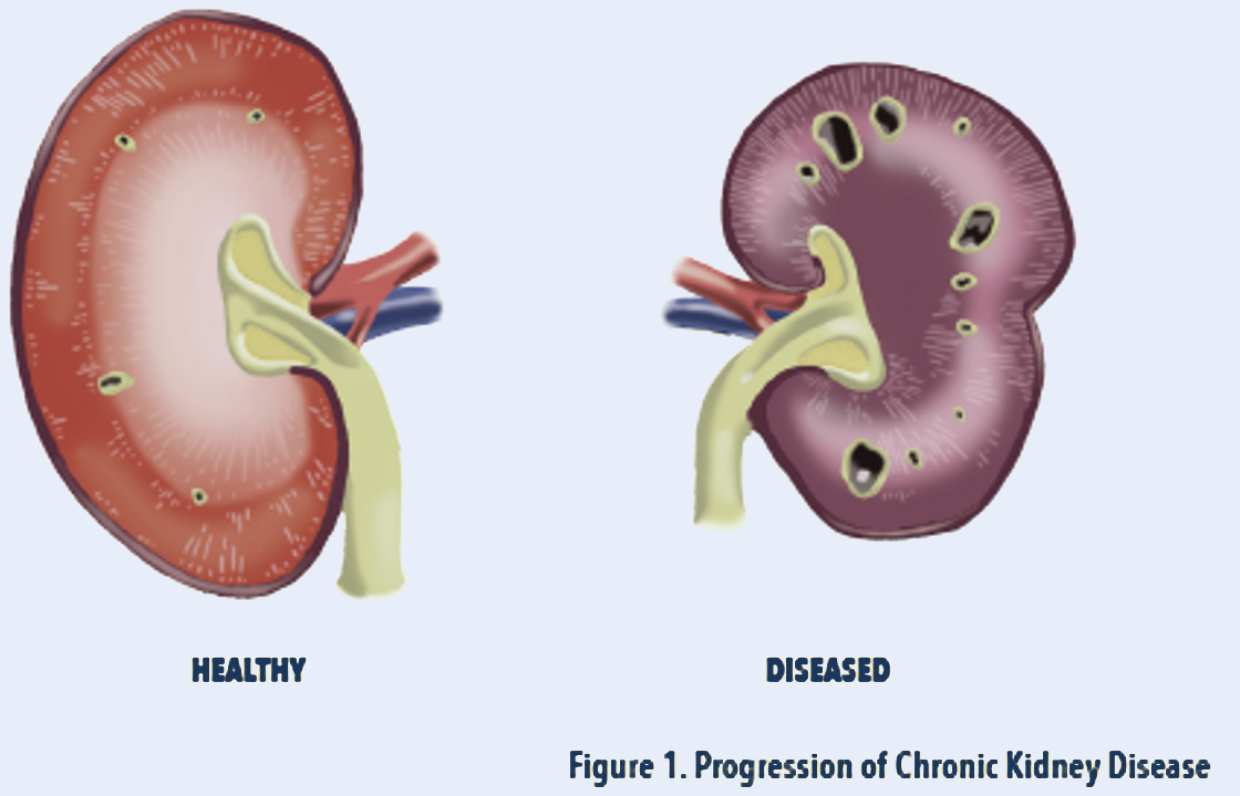
An estimated 10% of geriatric dogs and 35% of geriatric cats have CKD.3, 4, 5 A variety of compensatory and adaptive responses are likely involved in the pathogenesis and progression of naturally occurring CKD. The associated nephron damage is progressive and irreversible even though some pets with CKD have stable serum creatinine concentrations for months to years. Early diagnosis of CKD, followed by appropriate treatment, may result in improved survival. Nephrocalcinosis, systemic hypertension, intraglomerular hypertension, and proteinuria have been associated with progression of CKD.6, 7, 8, 9 All of these mechanisms of renal disease progression are potentially treatable. The good news is clinical evidence shows that dietary management can slow the progression of CKD (See Figure 1).10, 11, 12, 13, 14
Signs of chronic kidney disease typically emerge when functional kidney mass reaches 25% or lower. Earliest signs include polyuria and polydipsia. As disease progresses, uremia due to buildup of renal toxins may result in vomiting and diarrhea accompanied by anorexia, weight loss, dehydration, and oral ulceration.
The goals of managing patients with CKD are to improve quality and duration of life. The right nutrition plays a key role in both of these goals. In order to maximize treatment outcomes, certain dietary changes should be implemented as soon as renal disease is identified. Current evidence indicates nutritional management with therapeutic renal foods should begin when serum creatinine exceeds 2mg/dl in dogs and cats with CKD.15
Optimal Protein Levels & Sources
Proteins, particularly those of animal origin, are rich in sulfur-containing amino acids; metabolism of these leads to hydrogen ion generation. Consequently, many commercial diets provide a net load of acid, which must be excreted by the kidney if acid-base balance is to be achieved. Unfortunately, pets with reduced renal mass are less able to excrete acid, potentially resulting in metabolic acidosis from acid retention. This is generally associated with an increased anion gap due to the accumulation of unmeasured anions, and the acidosis may cause lethargy and inappetence. Proteinuria is toxic to renal tubules and higher nitrogenous waste levels increase the renal workload. There is general consensus that avoiding excessive dietary protein is indicated to control clinical signs of uremia in dogs and cats with CKD.16, 17
Mineral Balance
Hyperphosphatemia is common and directly related to the degree of renal dysfunction and the level of dietary phosphate intake. To delay the progression of renal injury, dietary phosphorus restriction should be instituted in all cats and dogs with azotemic chronic renal failure.18, 21 Research has shown that controlled levels of phosphorus, between 0.2 and 0.5% (dogs) and between 0.3 and 0.6% (cats), helps limit the progression of kidney disease.15 Moreover, research has also shown that optimal nutrition for pets with kidney disease includes sodium less than 0.3% (dogs), less than 0.4% (cats) and a balanced calcium to phosphorus ratio of 1:1 to 2:1 on a dry matter basis.15, 18, 21
Renoprotective Compounds & Symptomatic Care
Omega-3 fatty acids, an integral component of cell membranes, provide the starting point for making hormones that regulate inflammation, blood clotting, and arterial wall muscle tone. Appropriate levels of omega-3 fatty acids in foods, specifically Docosahexaenoic acid (DHA) and Eicosapentaenoic acid (EPA), play a role in reducing oxidative stress and improving lipid profiles in patients with CKD. DHA and EPA compete with arachidonic acid in several ways to alter eicosanoid production which is considered renoprotective.22 Docosahexaenoic acid has also been shown to reduce serum immunoglobulin deposition in kidneys and reduce proteinuria.23 Dietary supplementation with omega-3 fatty acids and antioxidants (vitamin E, carotenoids) reduce proteinuria, prevent glomerular hypertension and decrease production of proinflammatory eicosanoids.22 L-carnitine helps support healthy muscle maintenance and body condition, which is beneficial for pets with compromised renal function.24 Highly digestible protein and calories help ensure essential amino acid and energy availability.
All Nutrients Listed on a Dry Matter Basis
| Recommended Levels for Renal Diets | NVD K+M Kidney + Mobility for Cats | |
|---|---|---|
| Protein | 28-35% | 29.11% |
| Phosphorus | 0.3-0.6% | 0.55% |
| Sodium | <0.4% | 0.30% |
| NVD K+M Kidney + Mobility for Cats | |
|---|---|
| Total Omega-3 Levels | 2.15% |
| DHA | 0.45% |
| EPA | 0.47% |
- EVIDENCE
BLUE Clinical Data
- EVIDENCE
BLUE Clinical Data
- 1. Lean Muscle Mass Evaluation
- 2. Nutrient Digestibility
- 3. Urine Relative Supersaturation (RSS) Evaluation
- 4. Urine pH Studies
- 5. AAFCO Feeding Trials27
Lean Muscle Mass Evaluation
Table 5. Mean Results
| Measurements | Baseline | 6 Months |
|---|---|---|
| Lean Body Mass (g) | 3031 | 3062 |
| Serum SDMA (μg/dl) | 16 | 16 |
| Blood Taurine (nmol/ml) | 610 | 549 |
Purpose
To show that feeding BLUE Natural Veterinary Diet™ K+M Kidney + Mobility Support maintains lean muscle and renal health in senior cats.
Study Design
Nine female and three male clinically normal senior cats (age, 13.81 + 1.34 years; BCS, 3/5; body weight, 3.67 + 0.85; mean + SD) were enrolled in the study. Animals were maintained in standard, species-appropriate housing and managed consistently during the study, including providing access to activity/exercise. The study protocols were reviewed and approved by the research facility’s institutional animal care and use committee.
Cats were transitioned from an all-life-stages dry baseline diet (35.28% crude protein/14.67% crude fat/1.62% crude fiber, all DMB; no added L-carnitine) to BLUE Natural Veterinary Diet K+M Kidney + Mobility Support dry formula, which was offered at amounts to maintain ideal body condition for 6 months. Lean body mass (LBM) via DEXA, serum symmetric dimethylarginine (SDMA), whole blood taurine, and clinical hematologic and biochemical values at baseline and 2, 4 and 6 months were analyzed with paired t-tests.
Results12
Compared with baseline, mean values over the test feeding period for LBM, SDMA, and blood taurine remained stable (P>0.05), and along with other mean blood values, were within normal ranges. Mean baseline and 6-month values for these measurements were not significantly or clinically different. These findings indicate that BLUE Natural Veterinary Diet™ K+M Kidney + Mobility Support, with a balanced amino acid profile and added L-carnitine, promotes maintenance of lean muscle mass and renal health in senior cats.
Nutrient Digestibility
Purpose
Demonstrate that BLUE Natural Veterinary Diet™ Kidney Support foods are highly digestible.
Study Design
Two groups of adult cats (n=6 for feline study 1 and n=7 for feline study 2) from a commercial research facility were enrolled in the studies. All animals selected were clinically healthy. Animals were individually fed the species-appropriate dry BLUE Natural Veterinary Diet™ Kidney Support food once daily as their sole source of nutrition for 10 days. Animals were maintained individually in standard, species-appropriate housing and managed consistently during the study, including providing access to activity/exercise. Food consumption was monitored daily and body weights were recorded on days 1 through 6 and on day 10. On days 6 and 11 of the study, fecal samples from each animal as well as a sample of the diet fed was sent to a commercial laboratory for nutrient analysis. The results of these analyses were used to calculate digestibility values. Digestibility analysis was performed according to the recommended protocol for use in the determination of metabolizable energy of pet food as defined by AAFCO.32
Results27
Mean results from two studies show that BLUE Natural Veterinary Diet™ Kidney Support foods are highly digestible. For K+M for Cats, mean protein digestibility was 85% and mean calorie digestibility was 89%.
Urine Relative Supersaturation (RSS) Evaluation
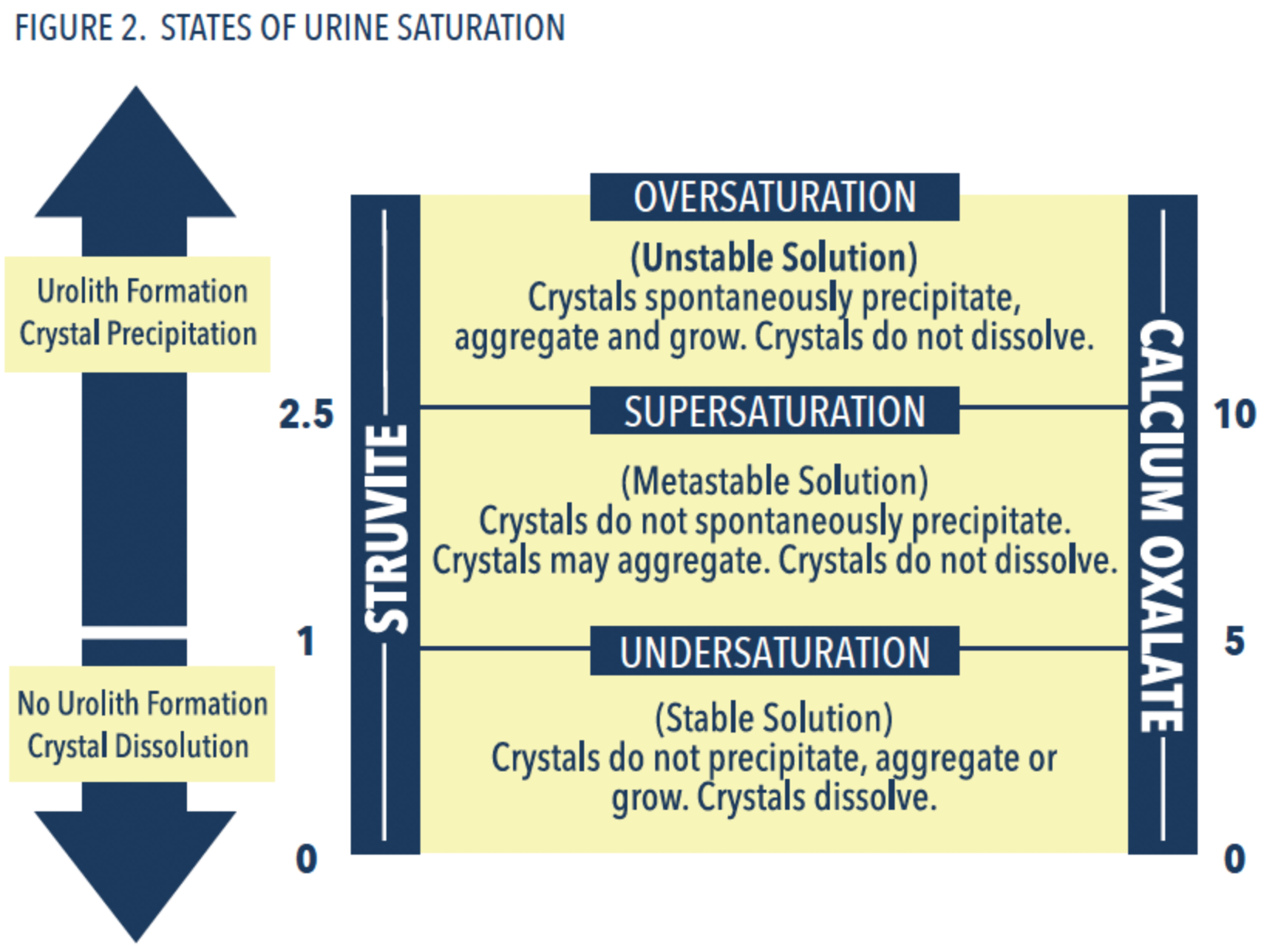
Purpose
To show that feeding BLUE Natural Veterinary Diet™ Kidney Support foods can result in clinically significant urine Relative Supersaturation (RSS) values less than 3 for calcium oxalate, which has been shown to limit the formation of calcium oxalate uroliths (See Figure 2).
Study Design
Four groups of adult cats (n=10 each for Feline RSS Studies 1, 2, 3, 4) were enrolled in the studies. All animals selected were clinically healthy. Animals were maintained in standard, species-appropriate housing and managed consistently during the study, including providing access to activity/exercise. The study protocols were reviewed and approved by the research facility’s institutional animal care and use committee.
Animals were fed the species-appropriate dry BLUE Natural Veterinary Diet™ Kidney Support food for 23 days. An amount of food calculated to maintain body weight was offered once daily and available for 2 hours. On day 22, a 24-hour urine sample was collected from each animal, using a metabolism cage with a urine collection system for dogs and a specialized litter box for cats. From that sample, urine pH was measured via pH meter and 2 aliquots were frozen and shipped to The University of Tennessee for RSS analysis.26 Those aliquots included a 1-ml sample that was diluted with 1.5 ml 1N HCl, and a 10- to 15-ml sample placed in a sterile container. For the RSS analysis, urine sodium, potassium, chloride, calcium, magnesium, phosphorus, citrate, oxalate, ammonia, pH, creatinine, and uric acid were measured.
Results22
Feeding BLUE Natural Veterinary Diet™ Kidney Support foods in cats resulted in clinically proven average urine RSS values <3 for calcium oxalate.
Urine pH Studies
Table 7. Feline Urine pH Studies Mean Results
| Feline Study No. | Urine pH (Mean) |
|---|---|
| 1 | 7.25 |
| 2 | 7.28 |
| 3 | 6.84 |
| 4 | 7.34 |
| Overall Mean | 7.18 |
Purpose
To show that feeding BLUE Natural Veterinary Diet™ Kidney Support foods can consistently produce mean urinary pH values of 7.2 in cats, which includes the recommended urine pH ranges to reduce the risk of development and reoccurrence of calcium oxalate uroliths.33
Study Design
Three groups of adult cats (n=8 each for Feline Urine pH Studies 1, 2, 3) were enrolled in the studies. All animals selected were clinically healthy. Animals were maintained in metabolism cages during the study. Animals were fed the species-appropriate dry BLUE Natural Veterinary Diet™ Kidney Support food for 7 days. An amount of food calculated to maintain body weight was offered once daily and available for 2 hours. On day 7, urine samples were collected from each animal at 0, 4, 8, and 24 hours via cystocentesis for measurement of pH.
Results28
Feeding BLUE Natural Veterinary Diet™ Kidney + Mobility Support food in cats resulted in mean urine pH values of 7.2, which is within the recommended urine pH ranges to reduce the risk of development and reoccurrence of calcium oxalate uroliths.
AAFCO Feeding Trials27
Animal feeding tests using AAFCO procedures32 substantiate BLUE Natural Veterinary Diet K+M for Cats dry formulas provide complete and balanced nutrition for maintenance of adult cats.
Nutritional Information
Animal feeding tests using AAFCO procedures substantiate that BLUE Natural Veterinary Diet™ K+M Kidney + Mobility Support for Adult Cats provides complete and balanced nutrition for adult maintenance.
Nutritional Analysis
| Nutrient | As-Fed (Average) |
Dry Matter Basis (Average) |
Per 100 kcals |
|---|---|---|---|
| Protein | 27.07% | 29.11% | 6.88 g |
| Crude Fat | 19.50% | 20.97% | 4.96 g |
| Carbohydrate (NFE) | 38.04% | 40.90% | 9.67 g |
| Crude Fiber | 4.50% | 4.84% | 1.14 g |
| Total Dietary Fiber | 8.54% | 9.18% | 2.17 g |
| Insoluble Fiber | 7.57% | 8.14% | 1.92 g |
| Soluble Fiber | 1.14% | 1.23% | 0.29 g |
| Ash | 4.69% | 5.04% | 1.19 g |
| Calcium | 0.55% | 0.59% | 0.14 g |
| Phosphorus | 0.51% | 0.55% | 0.13 g |
| Sodium | 0.28% | 0.30% | 0.07 g |
| Chloride | 0.31% | 0.33% | 0.08 g |
| Potassium | 0.85% | 0.91% | 0.22 g |
| Magnesium | 0.08% | 0.09% | 0.02 g |
| Iron | 149.38 mg/kg | 160.62 mg/kg | 3.80 mg |
| Copper | 22.07 mg/kg | 23.73 mg/kg | 0.56 mg |
| Manganese | 18.63 mg/kg | 20.03 mg/kg | 0.47 mg |
| Zinc | 117.79 mg/kg | 126.66 mg/kg | 2.99 mg |
| Iodine | 0.53 mg/kg | 0.57 mg/kg | 0.01 mg |
| Omega-3 Fatty Acids | 2.00% | 2.15% | 0.51 g |
| DHA | 0.42% | 0.45% | 0.11 g |
| EPA | 0.44% | 0.47% | 0.11 g |
| Omega-6 Fatty Acids | 3.21% | 3.45% | 0.82 g |
| Linoleic Acid | 3.06% | 3.29% | 0.78 g |
| Arachidonic Acid | 0.16% | 0.17% | 0.04 g |
| Taurine | 0.35% | 0.38% | 0.09 g |
| L-Carnitine | 449.99 mg/kg | 483.86 mg/kg | 11.44 mg |
| Vitamin C | 22.92 mg/kg | 24.65 mg/kg | 0.58 mg |
| Vitamin E | 7499.99 IU/kg | 806.44 IU/kg | 19.06 IU |
| Vitamin A | 29840.74 IU/kg | 32086.82 IU/kg | 758.53 IU |
| Vitamin D3 | 1706.61 IU/kg | 1835.06 IU/kg | 43.38 IU |
| Glucosamine | 649.99 mg/kg | 698.91 mg/kg | 16.52 mg |
| Chondroitin | 499.99 mg/kg | 537.62 mg/kg | 12.71 mg |
Metabolizable Energy
| kcal/cup | 425 |
| Grams/cup | 108 |
| kcal/kg (ME Calculated) | 3,934 |
| % ME from Protein | 24 |
| % ME from Fat | 42 |
| % ME from Carbohydrates | 34 |
Feeding Guidelines
| 5 to 9 lbs. | ¼ - ½ cup* |
| 10 to 14 lbs. | ½ - ¾ cups* |
*Use standard 8-oz. measuring cup.
Ingredients
Deboned Chicken, Peas, Pea Starch, Potato Starch, Dried Egg Product, Pea Protein, Chicken Fat (preserved with Mixed Tocopherols), Natural Flavor, Flaxseed (source of Omega-3 and 6 Fatty Acids), Powdered Cellulose, Fish Oil (source of DHA-Docosahexaenoic Acid), Potassium Citrate, Calcium Carbonate, DL-Methionine, L-Threonine, Dehydrated Alfalfa Meal, Potatoes, Taurine, Dried Chicory Root, Pea Fiber, Alfalfa Nutrient Concentrate, Choline Chloride, L-Lysine, Turmeric, Vitamin E Supplement, L-Tryptophan, Sweet Potatoes, Carrots, Natural Flavor, L-Carnitine, preserved with Mixed Tocopherols, Iron Amino Acid Chelate, Zinc Amino Acid Chelate, Glucosamine Hydrochloride, Vegetable Juice for color, Salt, Chondroitin Sulfate, Niacin (Vitamin B3), Copper Amino Acid Chelate, Blueberries, Cranberries, Barley Grass, Parsley, Dried Kelp, Yucca Schidigera Extract, Manganese Amino Acid Chelate, Thiamine Mononitrate (Vitamin B1), L-Ascorbyl-2- Polyphosphate (source of Vitamin C), Biotin (Vitamin B7), Vitamin A Supplement, Pyridoxine Hydrochloride (Vitamin 6), Calcium Pantothenate (Vitamin B5), Riboflavin (Vitamin B2), Ferrous Sulfate, Zinc Sulfate, Vitamin D3 Supplement, Vitamin B12 Supplement, Folic Acid (Vitamin B9), Copper Sulfate, Dried Yeast, Dried Enterococcus faecium fermentation product, Dried Lactobacillus acidophilus fermentation product, Copper Amino Acid Chelate, Dried Aspergillus niger fermentation extract, Dried Trichoderma longibrachiatum fermentation extract, Dried Bacillus subtilis fermentation extract, Manganese Sulfate, Sodium Selenite, Oil of Rosemary, Calcium Iodate.
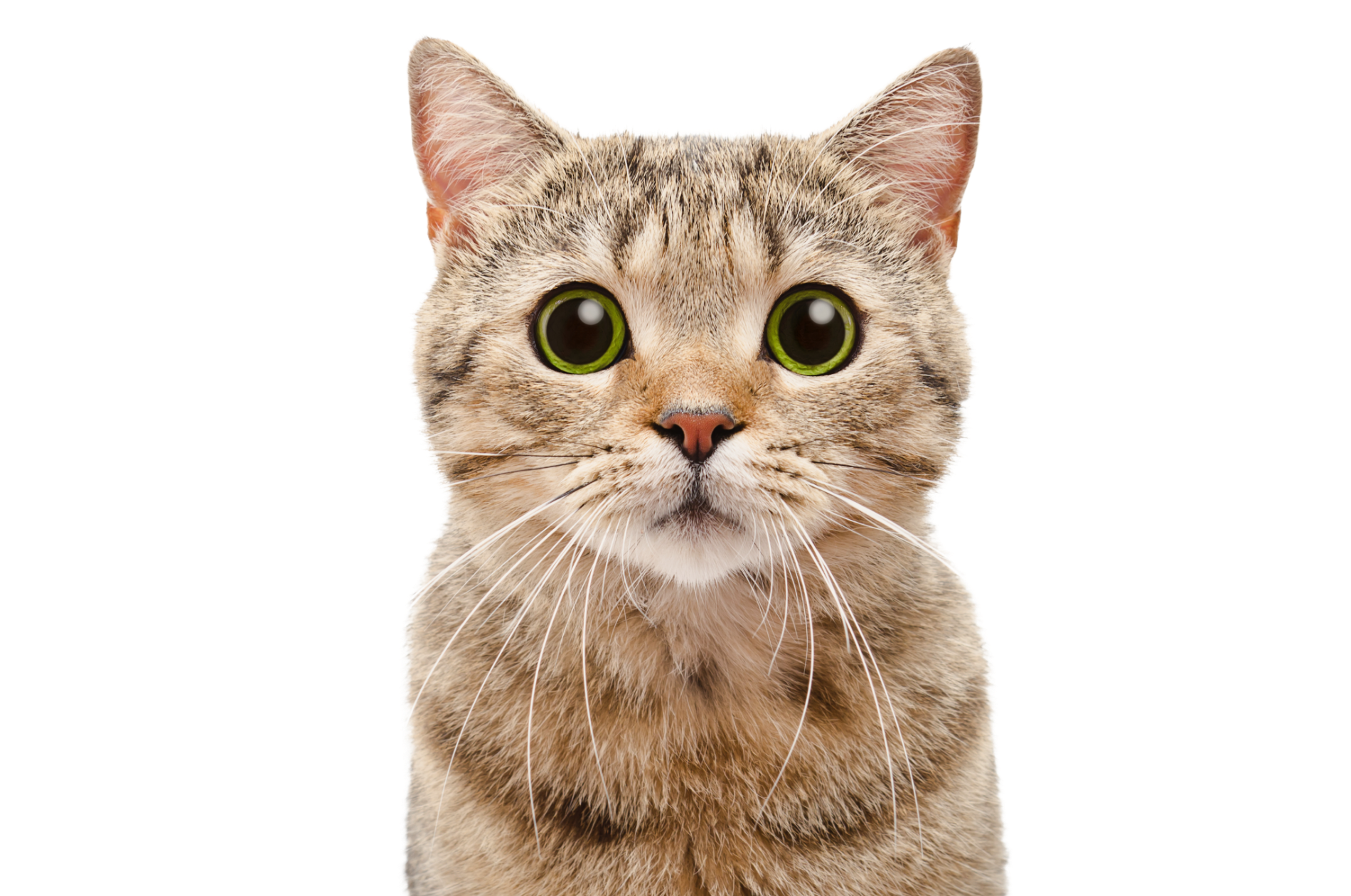
BLUE Natural Veterinary Diet™ K+M Kidney + Mobility Support canned formula is intended for intermittent or supplemental feeding only.
Nutritional Analysis
| Nutrient | As-Fed (Average) |
Dry Matter Basis (Average) |
Per 100 kcals |
|---|---|---|---|
| Protein | 6.00% | 25.64% | 6.13 g |
| Crude Fat | 4.40% | 18.80% | 4.50 g |
| Carbohydrate (NFE) | 11.39% | 48.68% | 11.65 g |
| Crude Fiber | 1.00% | 4.27% | 1.02 g |
| Total Dietary Fiber | 1.00% | 4.27% | 1.02 g |
| Insoluble Fiber | 0.90% | 3.93% | 0.94 g |
| Soluble Fiber | 0.10% | 0.60% | 0.14 g |
| Ash | 1.20% | 5.13% | 1.23 g |
| Calcium | 0.16% | 0.68% | 0.16 g |
| Phosphorus | 0.11% | 0.47% | 0.11 g |
| Sodium | 0.05% | 0.21% | 0.05 g |
| Chloride | 0.11% | 0.47% | 0.11 g |
| Potassium | 0.37% | 1.54% | 0.38 g |
| Magnesium | 0.019% | 0.08% | 0.02 g |
| Iron | 46.36 mg/kg | 198.12 mg/kg | 4.74 mg |
| Copper | 4.10 mg/kg | 17.52 mg/kg | 0.42 mg |
| Manganese | 4.30 mg/kg | 18.38 mg/kg | 0.44 mg |
| Zinc | 39.70 mg/kg | 169.66 mg/kg | 4.06 mg |
| Iodine | 0.76 mg/kg | 3.26 mg/kg | 0.08 mg |
| Selenium | 0.14 mg/kg | 0.60 mg/kg | 0.01 mg |
| Omega-3 Fatty Acids | 0.30% | 1.28% | 0.31 g |
| DHA | 0.06% | 0.26% | 0.06 g |
| EPA | 0.09% | 0.38% | 0.09 g |
| EPA + DHA | 0.15% | 0.64% | 0.15 g |
| Omega-6 Fatty Acids | 0.65% | 2.78% | 0.66 g |
| Linoleic Acid | 0.60% | 2.56% | 0.61 g |
| Arachidonic Acid | 0.04% | 0.16% | 0.04 g |
| Taurine | 0.23% | 0.98% | 0.24 g |
| L-Carnitine | 75.00 mg/kg | 320.51 mg/kg | 7.67 mg |
| Vitamin E | 33.00 IU/kg | 141.03 IU/kg | 3.37 IU |
| Vitamin A | 23263.00 IU/kg | 99414.53 IU/kg | 2378.63 IU |
| Vitamin D3 | 538.00 IU/kg | 2299.15 IU/kg | 55.01 IU |
| Glucosamine | 126.00 mg/kg | 538.46 mg/kg | 12.88 mg |
| Chondroitin | 99.00 mg/kg | 423.08 mg/kg | 10.12 mg |
Metabolizable Energy
| kcal/5.5 oz. can | 153 |
| Grams/5.5 oz. can | 156 |
| kcal/kg (ME Calculated) | 978 |
| % ME from Protein | 21 |
| % ME from Fat | 38 |
| % ME from Carbohydrates | 41 |
Feeding Guidelines
| Feed 1 - 1 ½ cans | For every 6 to 8 lbs. of body weight per day |
Refrigerate unused portion.
Ingredients
Chicken, Chicken Broth, Water, Potatoes, Potato Starch, Beef, Chicken Liver, Carrots, Pea Fiber, Sweet Potatoes, Potassium Citrate, Fish Oil (source of Omega-3 Fatty Acids), Natural Flavor, Flaxseed, Guar Gum, Taurine, Cassia Gum, Carrageenan, Salt, Calcium Carbonate, Blueberries, Cranberries, Choline Chloride, Iron Amino Acid Chelate, Zinc Amino Acid Chelate, L-Carnitine, Glucosamine Hydrochloride, Chondroitin Sulfate, Vitamin E Supplement, Thiamine Mononitrate (Vitamin B1), Copper Amino Acid Chelate, Manganese Amino Acid Chelate, Sodium Selenite, Niacin Supplement (Vitamin B3), Calcium Pantothenate (Vitamin B5), Pyridoxine Hydrochloride (Vitamin B6), Riboflavin Supplement (Vitamin B2), Vitamin A Supplement, Biotin (Vitamin B7), Potassium Iodide, Vitamin D3 Supplement, Vitamin B12 Supplement, Folic Acid (Vitamin B9), preserved with Mixed Tocopherols.

References
- Lund EM, Armstrong JP, Kirk CA, et al. Health status and population characteristics of dog and cats examined at private veterinary practices in the United States. JAVMA 1999; 214:1336-1341.
- Brown SA. Linking treatment to staging in chronic kidney disease. In August JR (ed): Consultations in Feline Internal Medicine. St. Louis: Elsevier Saunders, 2010, pp 475-482.
- Polzin DJ, Osborne CA, Adams LG, Lulich JP. Medical management of feline chronic renal failure. In Kirk RW, Bonagura JD (eds): Kirk’s Current Veterinary Therapy XI. Philadelphia: Saunders, 1992, pp 848-853.
- Kahn C, Line S. Renal Dysfunction in Small Animals, Merck Veterinary Manual on-line edition, www.merckvetmanual.com, July 2016.
- Lulich JP, Osborne CA, O’Brien TD, et al. Feline renal failure: Questions, answers, questions. Compend Cont Educ Pract Vet 1992; 14:127-153.
- Chakrabarti S, Syme HM, Elliott J. Clinicopathological variables predicting progression of azotemia in cats with chronic kidney disease. J Vet Intern Med 2012; 26:275-281.
- Jacob F, Polzin DJ, Osborne CA, et al. Association between initial systolic blood pressure and risk of developing a uremic crisis or of dying in dogs with chronic renal failure. JAVMA 2003; 222:322-329.
- Jacob F, Polzin DJ, Osborne CA, et al. Evaluation of the association between initial proteinuria and morbidity rate or death in dogs with naturally occurring chronic renal failure. JAVMA 2005; 226:393-400.
- Syme HM, Markwell PJ, Pfeiffer D, Elliott J. Survival of cats with naturally occurring chronic renal failure is related to severity of proteinuria. J Vet Intern Med 2006; 20:528-535.
- Elliott J, Rawlings JM, Markwell PJ, Barber PJ. Survival of cats with naturally occurring chronic renal failure: Effect of dietary management. J Small Anim Pract 2000; 41:235-242.
- Grauer GF, Greco DS, Getzy DM, et al. Effects of enalapril versus placebo as a treatment for canine idiopathic glomerulonephritis. J Vet Intern Med 2000; 14:526-533.
- Jacob F, Polzin DJ, Osborne CA, et al. Clinical evaluation of dietary modification for treatment of spontaneous chronic renal failure in dogs. JAVMA 2002; 220:1163-1170.
- Mizutani H, Koyama H, Watanabe T, et al. Evaluation of the clinical efficacy of benazepril in the treatment of chronic renal insufficiency in cats. J Vet Intern Med 2006; 20:1074-1079.
- Ross SJ, Osborne CA, Kirk CA, et al. Clinical evaluation of dietary modification for treatment of spontaneous chronic kidney disease in cats. JAVMA 2006; 229:949-957.
- Forrester SD et al. Chronic kidney disease. In: Hand MS et al, editors. Small Animal Clinical Nutrition. 5th Ed. Topeka, KS: Mark Morris Institute; 2010. p 765-810.
- Polzin DJ, Osborne CA, Ross S. Evidence-based management of chronic kidney disease. In: Bonagura JD, Twedt DC, eds. Kirk’s Current Veterinary Therapy XIV. St. Louis, MO: Sanders Elsevier, 2009; 872-879.
- Elliott DA. Nutritional management of chronic renal disease in dogs and cats. Vet Clin North Am Small Anim Pract 2006; 36(6):1377-1384, viii.
- Ross LA, Finco DR, Crowell WA. Effect of dietary phosphorus restriction on the kidneys of cats with reduced renal mass. Am J Vet Res 1982;43(6):1023-1026.
- Finco DR, Brown SA, Crowell WA, et al. Effects of dietary phosphorus and protein in dogs with chronic renal failure. Am J Vet Res 1992; 53(12):2264-2271.
- Elliott J, Syme HM. Editorial: Proteinuria in chronic kidney disease in cats–Prognostic marker or therapeutic target? Journal of Veterinary Internal Medicine 2006; 20: 1052-1053.
- Brown, S. A., Crowell, W. A., Barsanti, J. A., White, J. V., Finco, D. R. Beneficial effects of dietary mineral restriction in dogs with marked reduction of functional renal mass. Journal of the American Society of Nephrology 1991; 1: 1169–79.
- Brown SA, Brown CA, Crowell WA, et al. Beneficial effects of chronic administration of dietary omega-3 polyunsaturated fatty acids in dogs with renal insufficiency. Journal of Laboratory and Clinical Medicine 1998; 131: 447-455.
- Omega-3 Fatty Acids: An Essential Contribution, Harvard School of Public Health, http://www.hsph.harvard.edu/nutritionsource/omega-3-fats/.
- Ringseis R et al. Mechanisms underlying the anti-wasting effect of L-carnitine supplementation under pathologic conditions: evidence from experimental and clinical studies. Eur J Nutr. 2013; 52: 1421-1442.
- Polzin D. Chronic Kidney Disease. Ch.311 In Ettinger S et al. Textbook of Veterinary Internal Medicine. Volume 2. 7th Ed. St. Louis, MI: Saunders Elsevier; 2010. pp 1990-2021.
- University of Tennessee Pharmacology Lab, College of Veterinary Medicine, 2015.
- Blue Buffalo Co., Ltd., data on file, 2016-2022.
- Stevenson A. & Rutgers C. Nutritional Management of Canine Urolithiasis. In: Encyclopedia of Canine Clinical Nutrition. Eds: Pibot P, Biourge V. Elliott D. 2006. Aniwa SAS. Pgs 284-315.
- Bartges, Joesph W., et al. Methods of Evaluating treatment of Uroliths. Veterinary Clinics of North America: Small Animal Practice 1999;29:46.
- Dry matter basis dry formula.
- Blue Buffalo Company, data on file, 2020-2022.
- Association of American Feed Control Officials 2020 Official Publication.
- Minnesota Urolith Center https://urolithcenter.org/recommendations/1?locale=en
